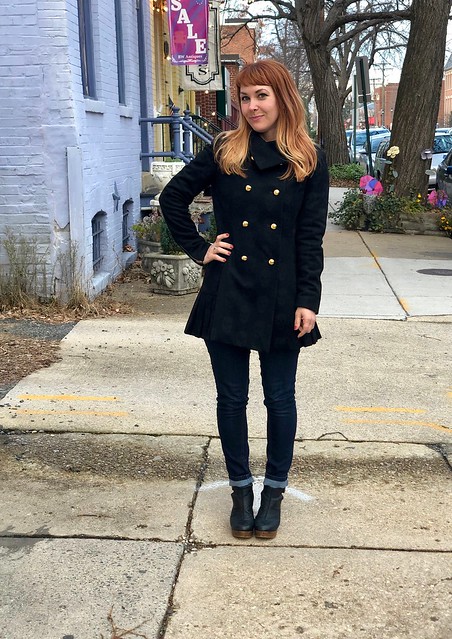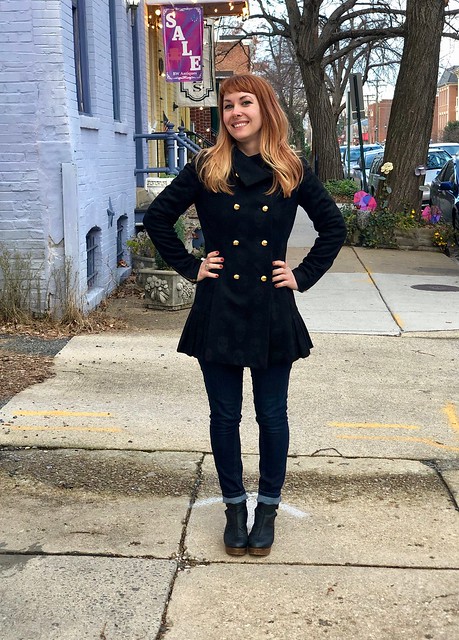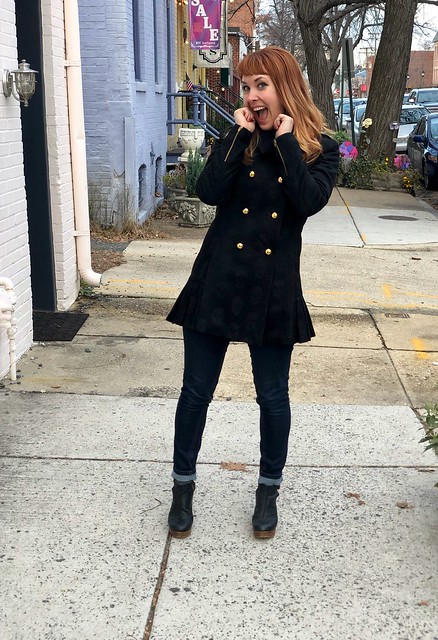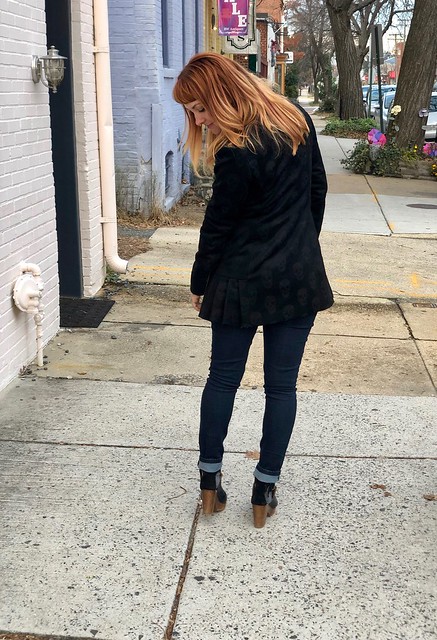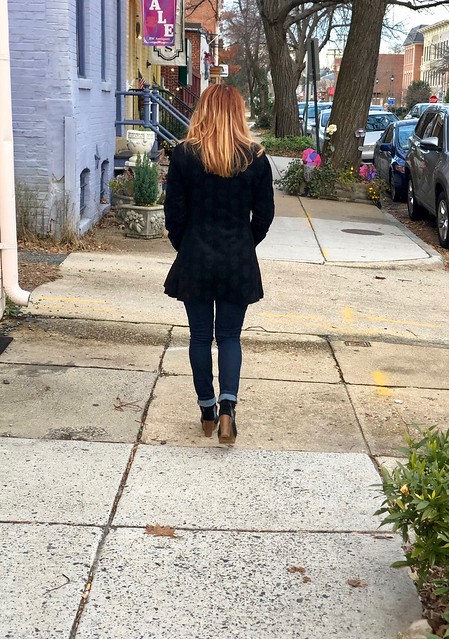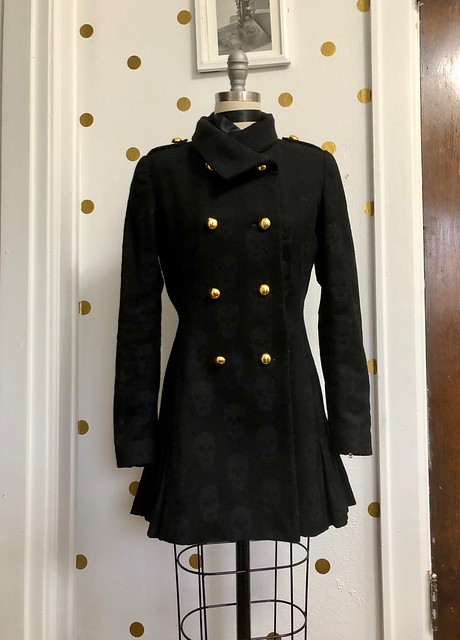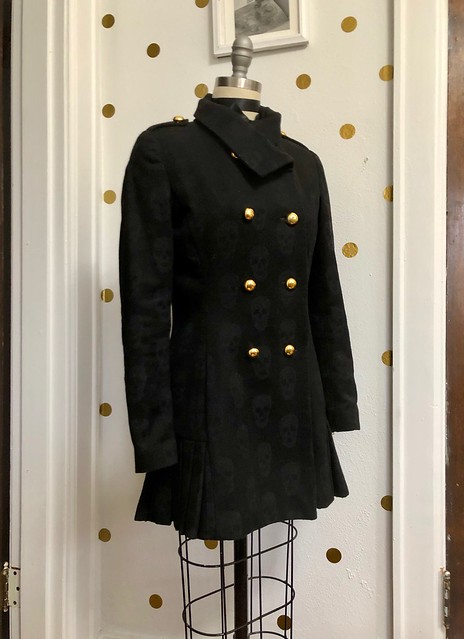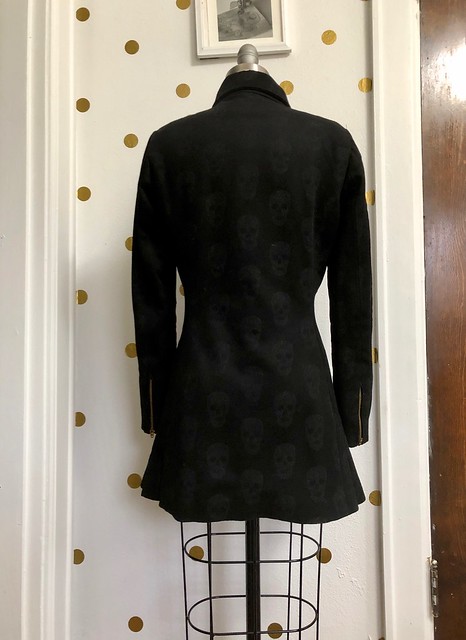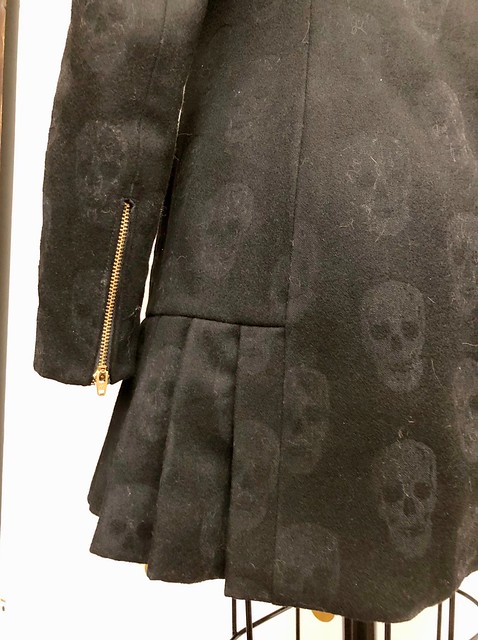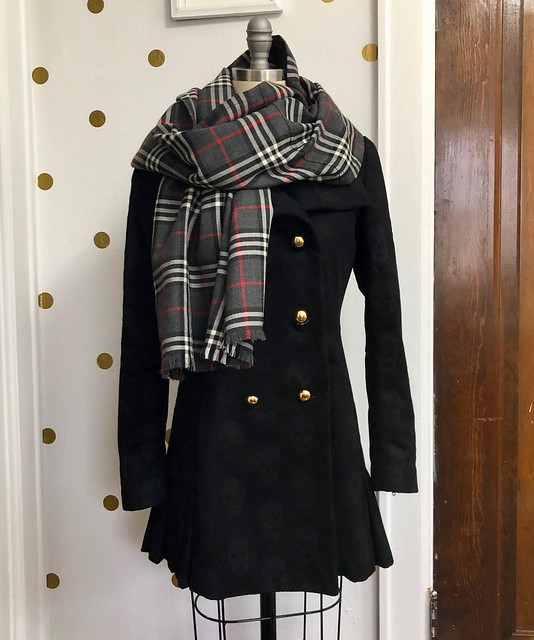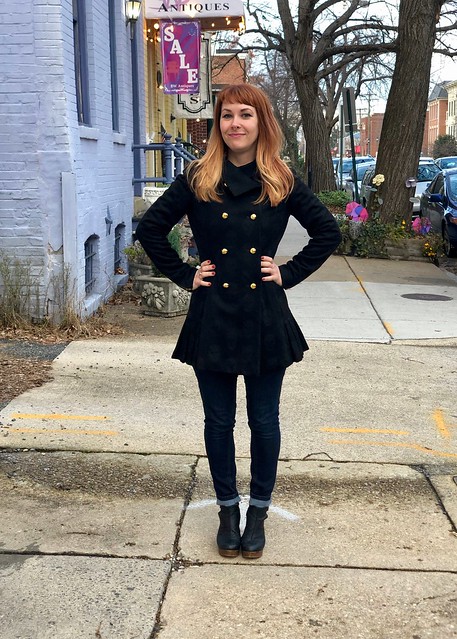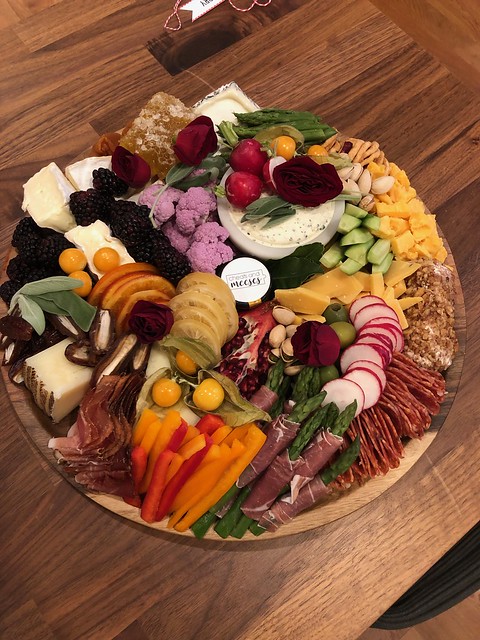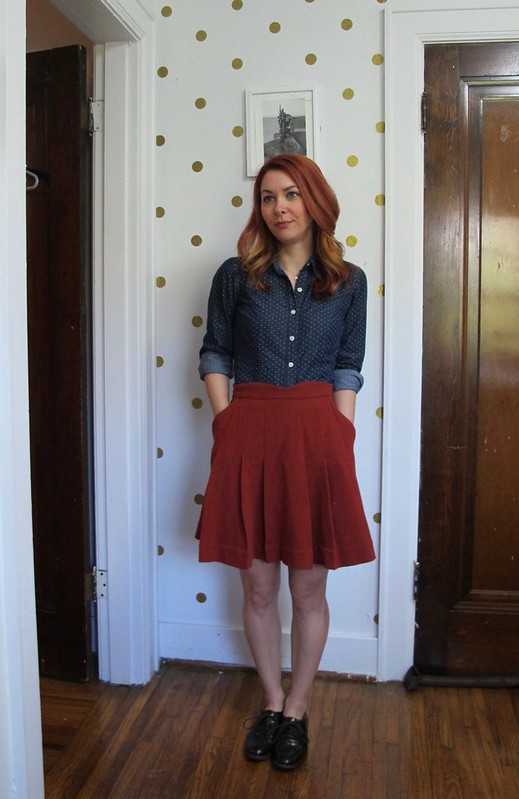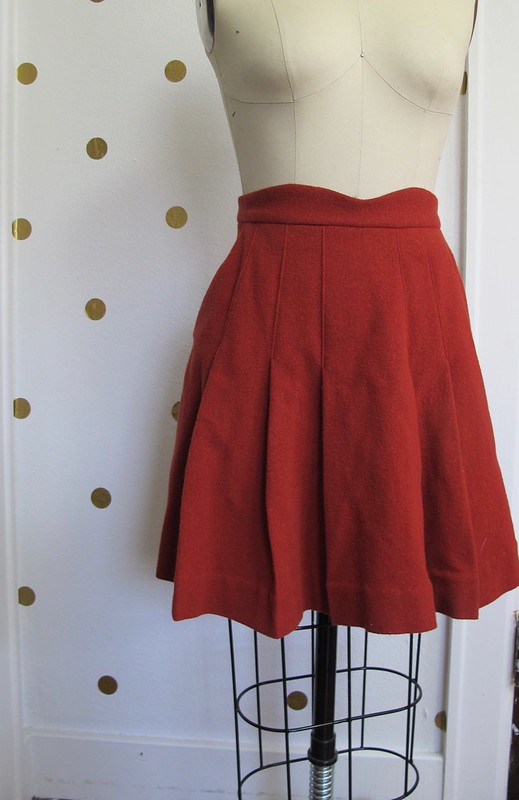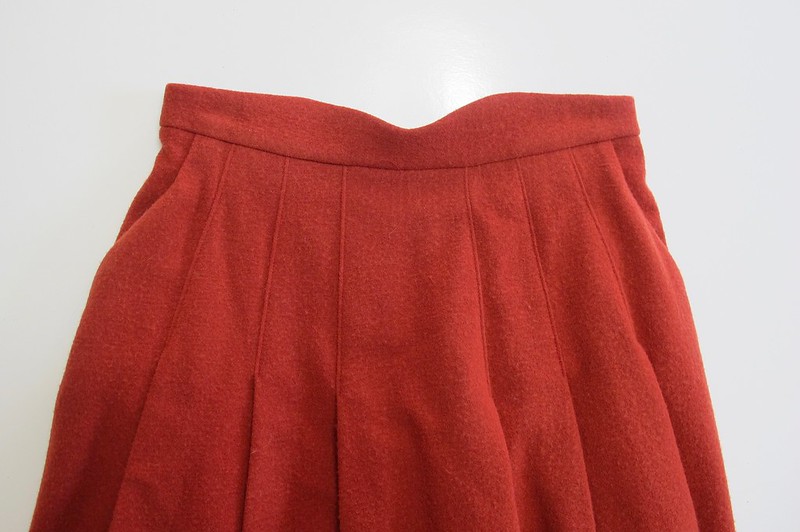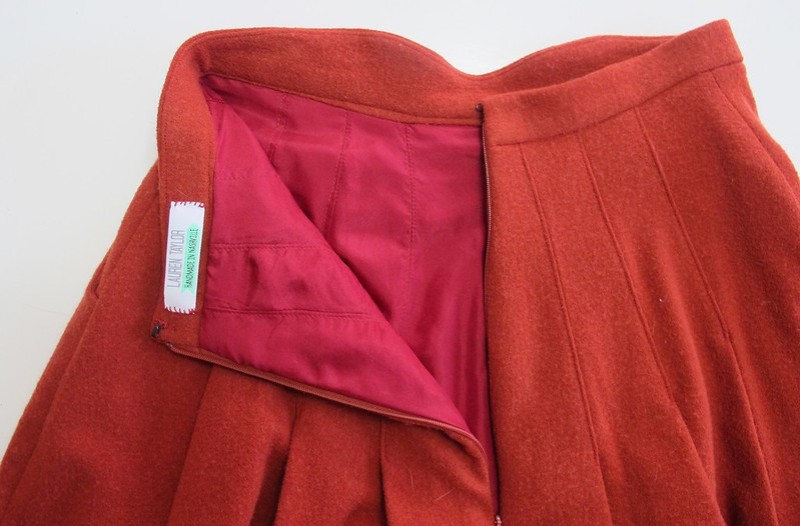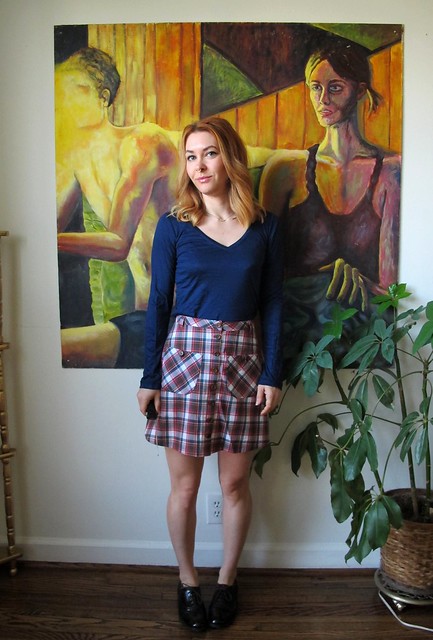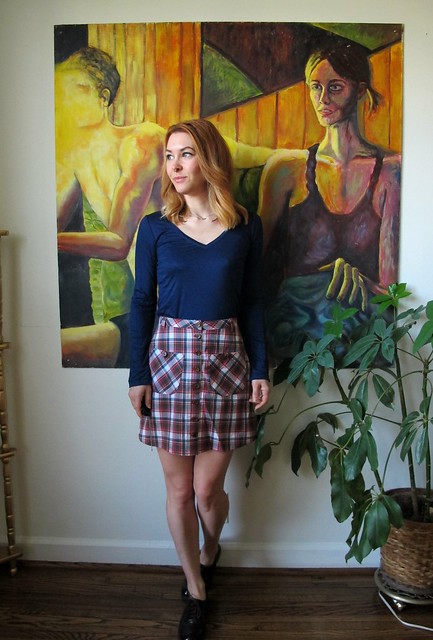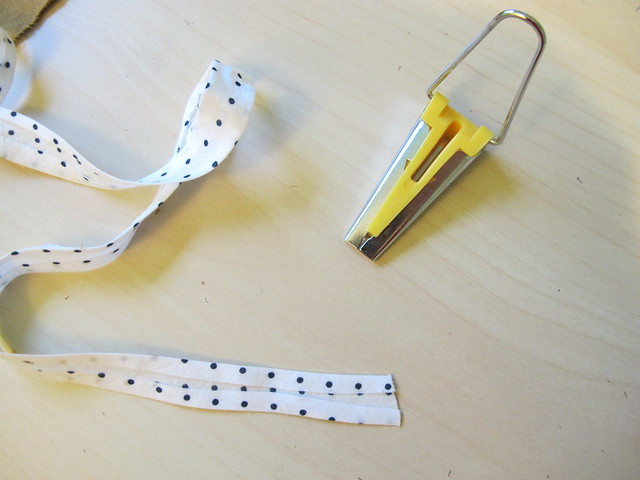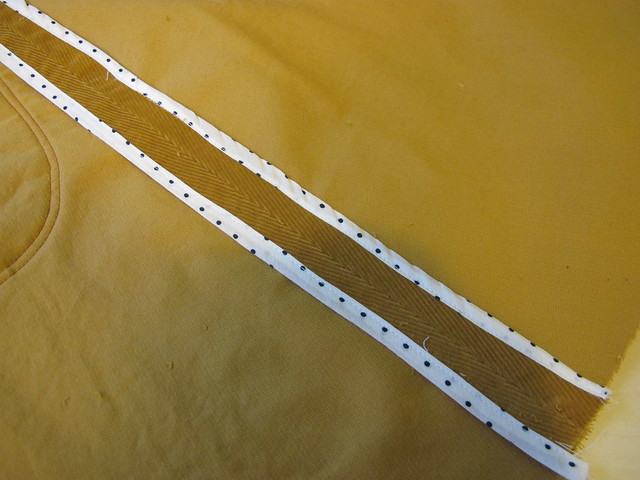Well y’all. This post has been a LONG time coming – hopefully it was worth the wait!
I made a coat! Big whoop, amirite? It’s been a minute since I sewed a real coat – I just don’t live in a climate that warrants a serious need for multiple coats. Which is a bummer because I really LOVE sewing me some coats! And I actually sewed two this year – but I just want to talk about this one first. Like I said, it has been a long time in the making!
I received this fabric way back in May of 2016, actually! It took me a solid year to decide what I wanted to make with it, then nearly another year to actually start the project. And while I finished this earlier in 2018 (in February, it appears) – it has taken me this long to get some photographs of it! So yeah, this might be my longest project to date!
So – a little bit about the fabric! This fabric is actually Alexander McQueen coating from a prior collection. It is 100% wool, solid black, and has laser printed skulls all over that you really only see in certain lighting. I wasn’t able to find what this fabric was used for in AM’s collections, but it’s essentially a medium weight (on the lighter side of medium weight, to be specific) coating. It’s super, super amazing.
The coating was actually given to me – you know, back in 2016 – courtesy of my friend Anokhee. She originally bought it from Darrell Thomas Textiles in Ottawa, Canada (where she also teaches!). If you are thinking “wow Lauren that’s a really fucking generous gift” YOU WOULD BE ABSOLUTELY RIGHT. I was floored when I received the fabric, and am honestly still a bit dazzled every time I wear my coat. I didn’t really know Anokhee that well when she sent me the fabric – we were email/internet buddies, seeing as she lives in Canada and I’m in Nashville – but this year, I actually got to hang out with her several times when I was in Canada to teach my Jeans Workshops at Darrell Thomas Textiles! I’ve even sat in her hot tub, so, basically, yes she’s an amazing friend.
And speaking of Darrell Thomas Textiles – if you follow me on Instagram, you’ve probably seen this name pop up a few times. Darrell’s shop gets some of the BEST high-end designer fabric I’ve ever seen, and I’ve been really lucky to be the recipient of a few special pieces, as well as be able to shop there in person! In addition to this McQueen fabric, I’ve gotten some amazing Dolce & Gabbana prints (stay tuned for a blog post on one of them!), as well as pieces from Burberry, Louis Vuitton, and other gorgeous pieces that aren’t necessarily attributed to a specific designer but are still stunning as hell. While these pieces definitely, absolutely are not cheap – they are unique, special, and high-quality. I realize this post just sounds like a giant advertisement, so I’m gonna stop now, but – just wow. Check out his Instagram if you want some eye-candy to creep on.
Ok, back to my coat!
So, yes, I hemmed and hawed when it came to cutting this fabric! First, I couldn’t decide on a pattern. Then, I went through a lot of second-guessing with the fit, post-muslin. Once I powered through and cut all the (many, many) pieces, the actual construction of this garment went pretty quickly (according to my Instagram – it took about two weeks!). I don’t generally second-guess myself and I rarely treat my fabric like it is some kind of precious gold, but in this case, I am glad I took my time to figure out exactly what I wanted because the finished coat is basically perfect as far as I’m concerned!
The pattern I chose is the Quart Coat from Pauline Alice Patterns. I love the military look of this style, and I felt it would pair well with my McQueen fabric. Especially since my fabric can look either solid black or covered in skulls, depending on the light!
I cut a 36, and my preliminary muslin looked preeetty good except that there were some light pulls near the bust, which is usually indicative of needing a full bust adjustment. For the life of me, I could NOT find a way to add room at the bust with these particular pattern pieces! The princess seams come out of the arm hole, not over the bust, and every tutorial I found (or reference in my dozens of fit books) only covered the latter. And half of them wanted to add a dart – which I didn’t want in my coat. I tried several different things and agonized for months. I knew this fabric was expensive, hard to come by, and I wanted to do it right! But you know what? I ultimately decided, fuck it, and went ahead and cut the coat. Part of this was because the drag lines were indeed really subtle – super minor. The other part was me realizing that muslin doesn’t have the same “give” that regular garment fabrics do, and there was a good chance those minor fitting issues would be resolved by simply using a different fabric. I’m not always right, but I was right in this case. The wrinkles disappeared, the coat looks fabulous, and life goes on.
After getting past that and cutting aaaaalll those pieces, I was ready to sew! I actually started a little log to keep track of how long my progress was taking. JUST THE PREP ALONE (cutting, marking, underlining, etc) took 8.5 hours! I stopped keeping track after that (ha!) but I always tell this to people when they suggest I do some custom sewing for them. Bitch, u can’t afford me.
Since the coating is on the lighter weight side, I opted to underline all my pieces with a cotton flannel. This adds a layer of support (necessary as this is a quite structured coat) as well as additional warmth. I used a Robert Kaufman Mammoth Flannel for this purpose; I had purchased it with the intention of another project that I ended up scrapping. If you’re curious, this is the specific flannel I used inside my coat haha. While I find Mammoth Flannel to be really reasonably priced (and it is SO NICE!), it is a bit expensive to use as underlining. That said, I already had the fabric so I didn’t see any point in buying something else, even if it did cost less.
Underlining definitely took the longest. I like to underline by hand, which means a looong time of sitting at my cutting table, with endless hand-basting. I use cotton thread (silk is nice too, but cotton is what I had on hand!) and create long basting stitches, which are then removed as the pieces are sewn together. After the pieces are sewn by machine, I trimmed all the flannel from the seam allowances and then catchstitched the seam allowances down (again, by hand) to keep them nice and flat. It’s a lot of extra effort, but this fabric deserves that effort!
The lining is a solid black silk charmeuse, which I bought at Mood Fabrics on one of my many trips to NYC. I love, love LOVE using silk charmeuse for coat linings – it’s heavy and warm, and it looks expensive as hell. Just the way silk charmeuse catches the light when you wave it around delights me to no end. Why I chose black – well, I had considered using a fun lining color, like red or teal. But while shopping, nothing at the store really appealed to me. I also feel like most RTW (not all, but a lot of them) use coordinating and matching linings, rather than contrast. I wanted my coat to look like it could have come from the shop, and also, black on black just looks good.
Since my coat was all black, that gave me a little freedom to choose something more contrasting for the buttons and sleeve zippers – so I went with BRIGHT SHINY GOLD!!! I just love how this turned out, I think it really adds a luxurious touch that isn’t over-the-top. My buttons are from Mood Fabrics (they are actually Marc Jacobs hahahaah!), and my zippers are from Sil Thread (in the NYC Garment District). I spent a long time trying to find hardware that had the same tone and brightness, so they match well.
A few things about the construction – one, I definitely put the pleats in backwards. Whoops! It doesn’t bother me, but, if you noticed that – yes, I am aware. I did not do any traditional/heavy tailoring with this garment. Part of this is because I just wanted to finish the damn thing – and part of it is because I’ve learned I don’t really like wearing heavily tailored coats. I dunno, they just feel a little too precious to me, and I’m scared I’ll mess them up somehow! Also, my padstitching always ends up going wonky if the coat gets stored with the lapels in the wrong place, and I can’t ever seem to steam them back into submission. So while this coat has some basic tailoring – the fronts are interfaced (with a fusible weft, before I added the underlining), there is a back stay, and I added both shoulder pads and sleeve heads – I left off the fancy stuff like horsehair, padstitching, and bound button holes (just machine ones here!). Sacrilegious? Sure. Whatever you say.
I don’t know what else to say about this project, so just have a photo dump:
Oh! Here’s another piece from Darrell Thomas Textiles – one of my precious Burberry wools! I actually have two of these (the other one is the classic tan, which I believe they just got a new shipment in at the shop), both of which I made into simple blanket scarves. I started with a yard of fabric, which I cut in half lengthwise and then seamed together (with a flat-felled seam) to create a rectangle that is 28″ wide by 70″ long. I then hemmed the two long sides with a 1/2″ seam folded twice and edgestitched down. On the tan scarf, I also hemmed the short ends – and on this one, I teased out a little fringe! I have always wanted one of these Burberry scarves – and while the fabric was not cheap (I don’t remember the exact amount, I think it’s somewhere in the realm of $150-$170 CAD per yard), it is definitely cheaper than buying from Burberry! And it’s basically a giant blanket, which is the best thing ever 🙂
So, there’s the long story saga of my Alexander McQueen coat! Cheers to you if you’re still here reading 🙂 Big thanks to Anokhee for her incredibly generous gifts – both the fabric and for introducing me to the wonder that is Darrell Thomas Textiles! Another giant thanks to my student Elisa, who graciously took these photos for me during my workshop at Stitch Sew Shop earlier this month! In closing, I will leave you with this beautiful cheese plate that we destroyed immediately after:
Have a great day, everyone!

